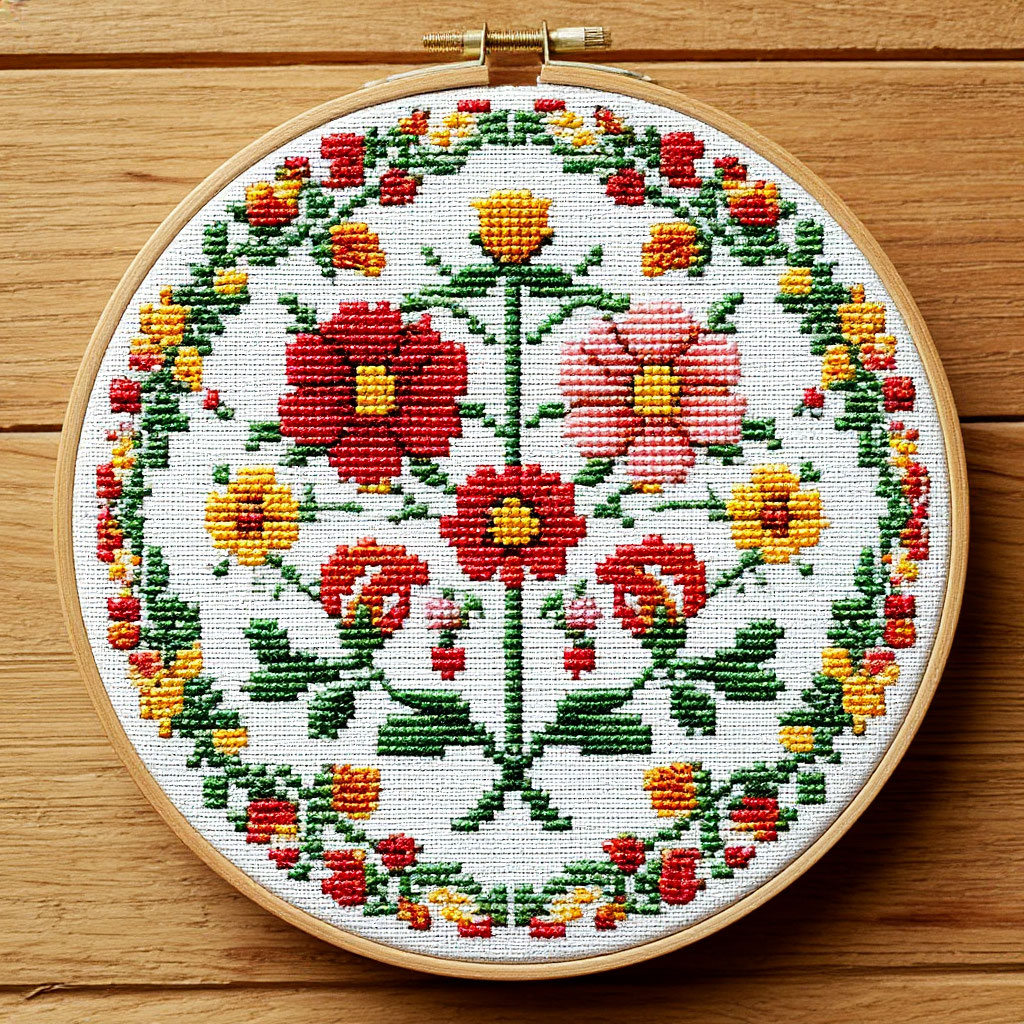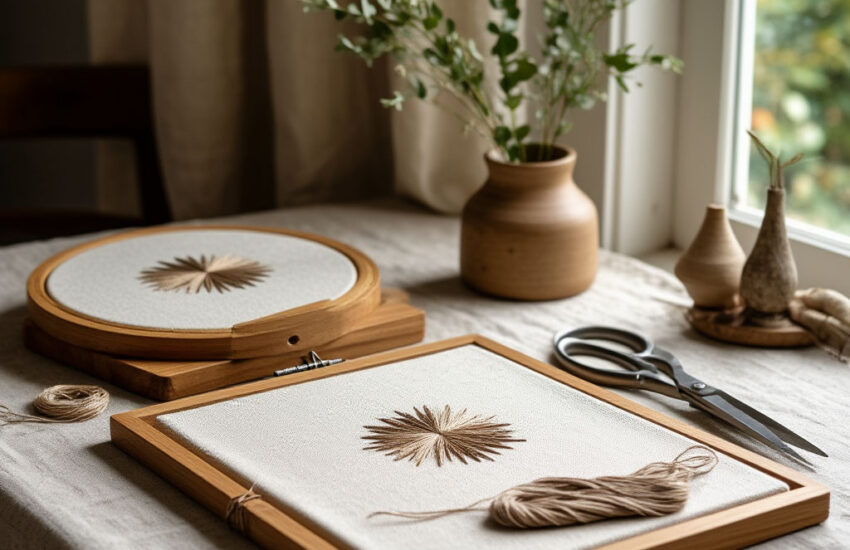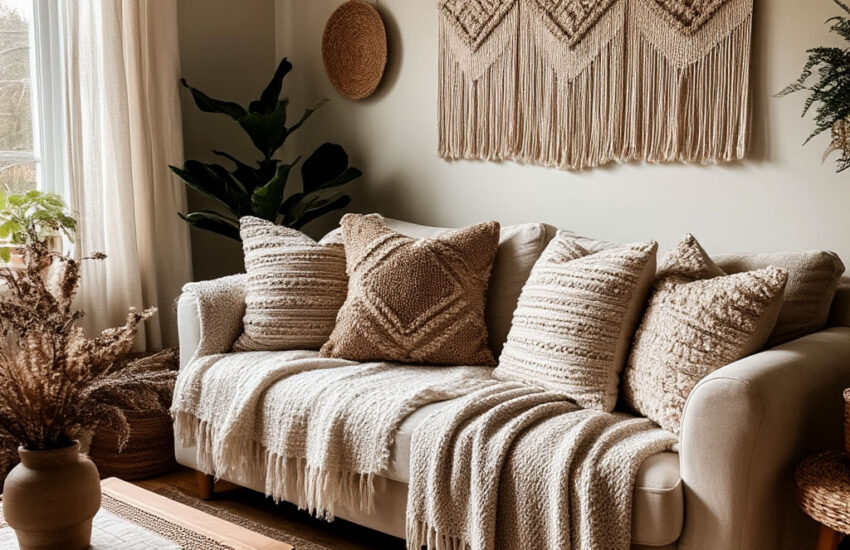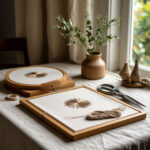Cross-Stitch for Beginners: Patterns, Tips, and Techniques
Contents
Cross stitch for beginners combines simplicity with beautiful results, especially when using easy cross stitch patterns as your starting point. Let’s explore why this timeless technique remains one of the best ways to enter the world of needlework. By the end of this article, you’ll be able to download a checklist to help you start cross stitch with confidence — from choosing patterns to mastering basic techniques.
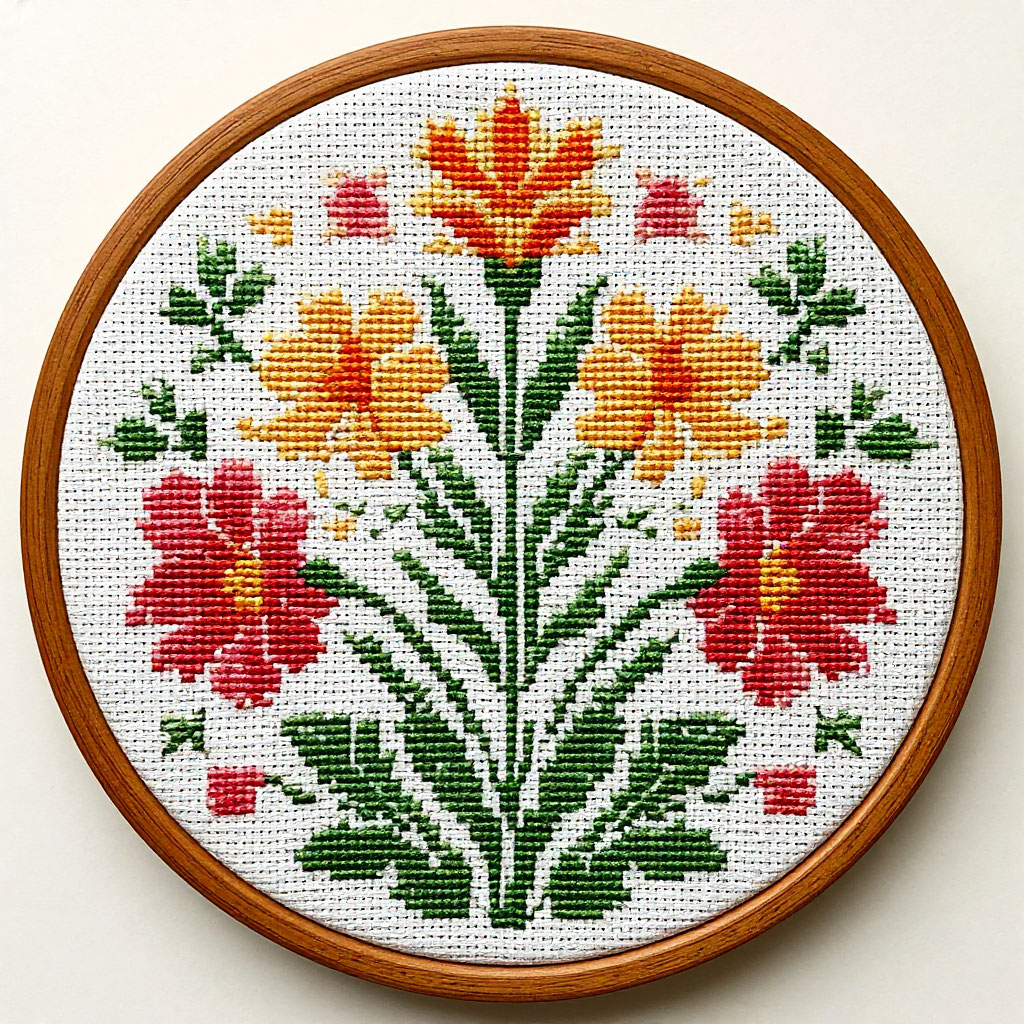
What Is Cross-Stitch? A Beginner’s Guide
At its core, cross stitch for beginners is about creating X-shaped stitches on fabric to form patterns. This counted-thread technique differs from other embroidery styles, making cross stitch vs. embroidery an important distinction for new crafters. Historical samples dating to the 6th century BC prove its enduring appeal.
Why Beginners Love Cross Stitch
Three key factors make cross stitch for beginners particularly approachable:
- Grid-based precision – Unlike freeform embroidery, the fabric’s weave creates natural guides
- Minimal supplies – Just the best fabric for cross stitch (usually Aida 14-16 count), floss, and a needle
- Progressive difficulty – From easy cross stitch patterns to complex designs, there’s always a next step
Essential Cross Stitch Variations
While learning how to start cross stitching, you’ll encounter:
- Traditional full crosses (complete X shapes)
- Half crosses (single diagonal stitches)
- Decorative double crosses (Slavic style)
Cross Stitch vs. Other Techniques
Understanding cross stitch vs. embroidery helps beginners choose their path:
- Surface embroidery: Freeform stitches requiring more artistic skill
- Blackwork: Geometric patterns using straight stitches
- Crewel: Wool thread embroidery with dimensional effects
Starting Your Cross Stitch Journey
When first learning how to start cross stitching:
- Select beginner projects using easy cross stitch patterns
- Invest in the best fabric for cross stitch (Aida 14 is ideal)
- Master basic stitches before tackling complex designs
Pro Tips for Cross Stitch Beginners
✔ Center-start positioning ensures proper layout
✔ 30-50cm thread lengths prevent tangling
✔ Consistent stitch direction creates professional results
Cross stitch for beginners offers more than just beautiful creations – it builds patience, focus and artistic confidence. Starting with easy cross stitch patterns and quality materials like the best fabric for cross stitch sets you up for success. Whether comparing cross stitch vs. embroidery or selecting your next project, remember every expert stitcher began with that first X.
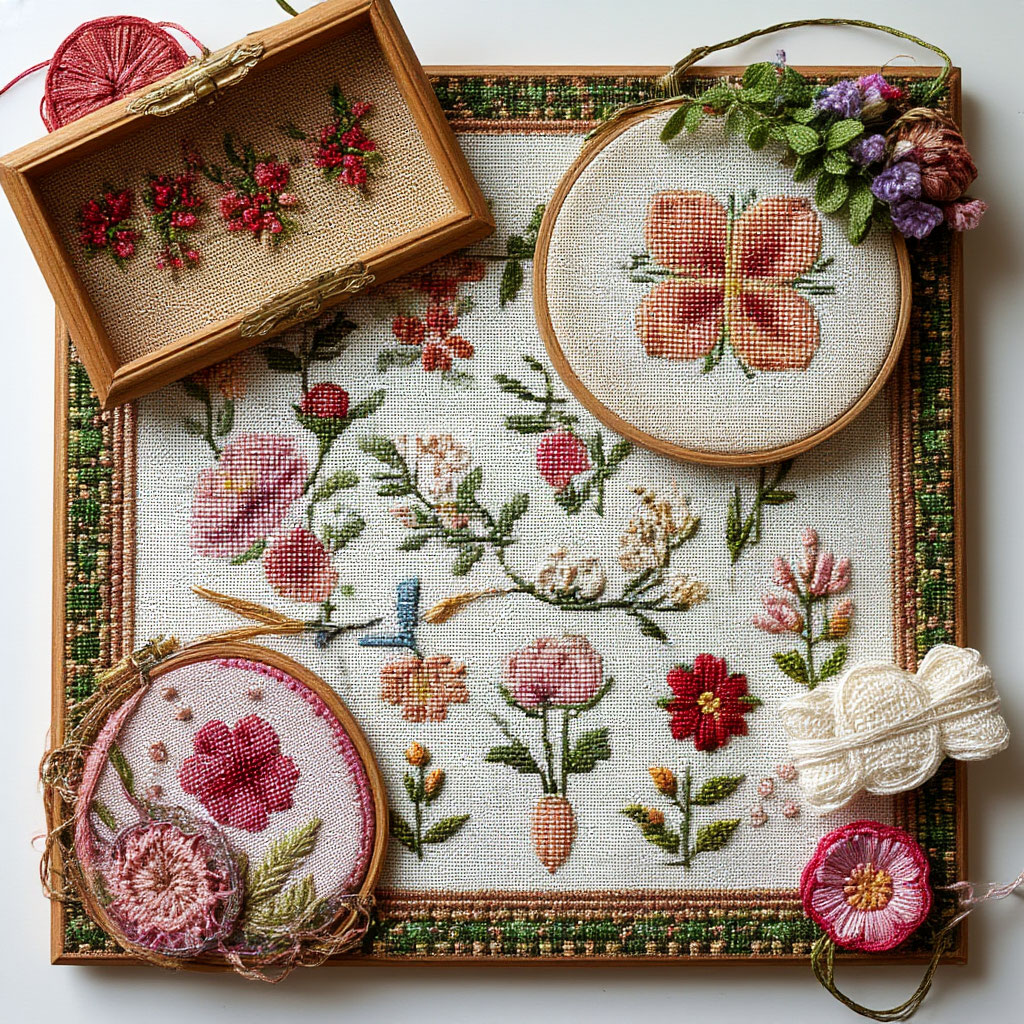
Must-Have Cross-Stitch Supplies
Choosing the proper materials makes all the difference when learning cross stitch for beginners. Many newcomers make the mistake of buying the first kit they find, only to become frustrated with poor results. Let’s examine exactly what tools and supplies beginners need to start cross stitching successfully.
Best Fabric for Cross Stitch: How to Choose Wisely
The foundation of every project is the fabric – specially woven material with visible holes. For those discovering how to start cross stitching, these are the top options:
Aida cloth remains the most popular choice for easy cross stitch patterns, with clearly defined squares. Beginners should select Aida 14 or 16 (the number indicates stitches per inch). Higher numbers mean smaller stitches.
Evenweave fabric offers a more delicate alternative where stitches form over two threads. This works well for stitchers who’ve mastered basic cross stitch techniques.
Stiff canvas (Stramin) works best for decorative items like pillows. While it holds shape beautifully, it requires more effort to stitch through.
An important tip for cross stitch beginners: test small swatches of different fabrics before committing to large pieces. Comfort with your material matters most.
Embroidery Floss: Selecting the Perfect Threads
Thread quality directly impacts results. The best options for cross stitch for beginners include:
DMC cotton floss sets the gold standard with 500+ colorfast shades that don’t twist or fray. It’s ideal for first-timers working on easy cross stitch patterns.
Anchor threads provide excellent color reproduction at a slightly lower price point.
Gamma offers budget-friendly practice thread for beginners still learning techniques.
When comparing cross stitch vs. embroidery thread needs, beginners should note that pre-selected color packs eliminate guesswork and ensure harmonious results.
Must-Have Tools for Every Beginner
The right equipment makes learning how to start cross stitching much easier:
Tapestry needles (sizes 22-28) with blunt tips prevent fabric damage. Match needle size to fabric count – #24 works perfectly with Aida 14.
Hoops (15-20cm wooden or plastic) keep fabric taut. Q-snap frames offer a modern alternative.
Sharp embroidery scissors with fine points make clean cuts. Many crafters use high-quality nail scissors.
Water-soluble markers help grid fabric for complex patterns.
Storage solutions like plastic boxes or specialty organizers keep floss tangle-free.
Helpful Accessories for Enhanced Stitching
While cross stitch for beginners requires only basic supplies, these extras improve the experience:
- Magnifying lamps prove invaluable for small stitches
- Daylight bulbs reduce eye strain
- Floor stands support large projects
- Needle threaders assist those with vision challenges
Remember – you don’t need expensive gear to start cross stitching successfully. Begin with quality core materials, then add specialty tools as skills develop. By choosing the best fabric for cross stitch and reliable threads, beginners set themselves up for rewarding first projects that build confidence in this timeless craft.
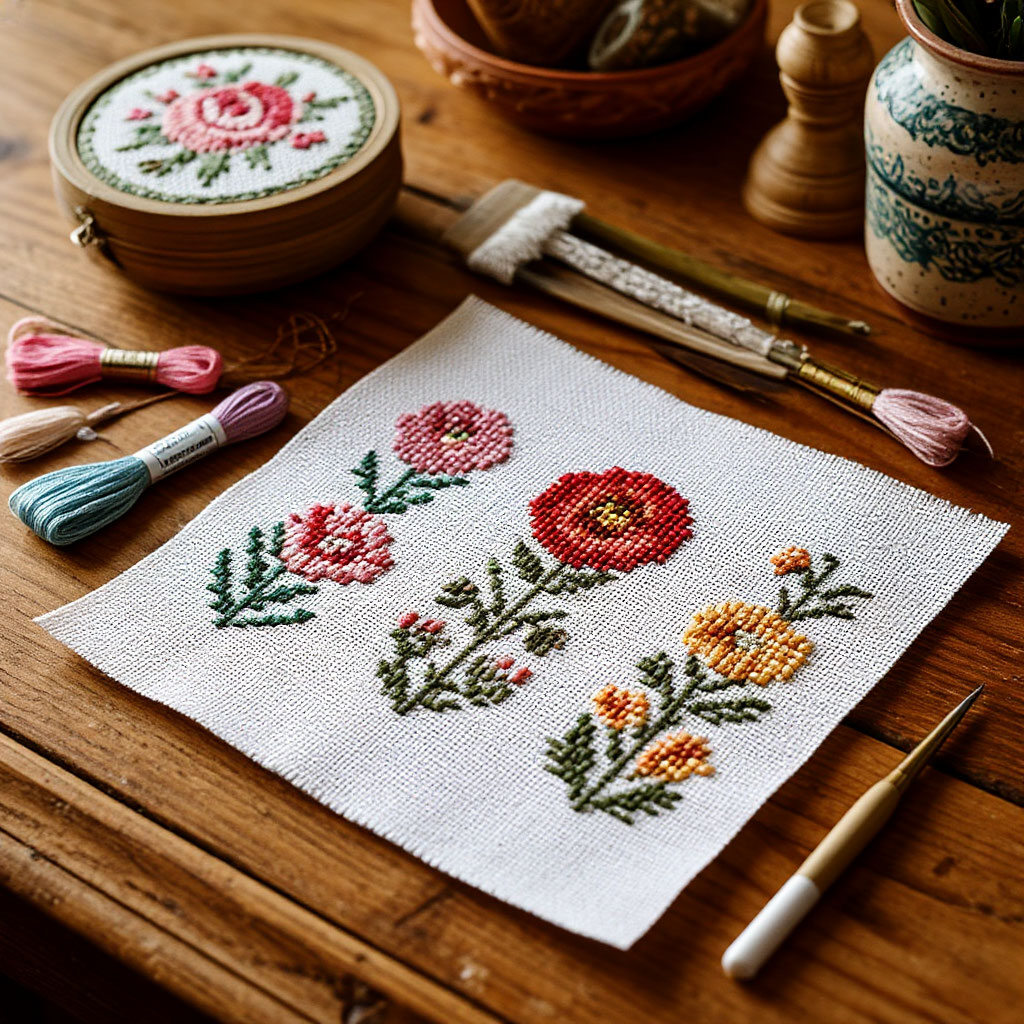
How to Read a Cross-Stitch Pattern
Understanding patterns is one of the most crucial skills in cross stitch for beginners. Many newcomers feel overwhelmed when first encountering those intricate grids of symbols. Let’s break down how to properly work with patterns so your stitching journey brings joy rather than frustration.
Key Elements of Cross Stitch Patterns
Modern cross stitch patterns contain several essential components that every beginner should know. The main working element is the symbol grid where each square represents one stitch on your fabric. For those just learning how to start cross stitching, colored patterns or black-and-white charts with distinct symbols work best.
The legend is your decoding key, showing which symbols correspond to which thread colors. For example:
■ – DMC 310 (black)
● – DMC 666 (bright red)
Important pattern specifications include:
- Finished design size in stitches (e.g., 80×120)
- Total number of thread colors
- Recommended fabric count
Choosing the Right Pattern for Beginners
When starting cross stitch for beginners, pattern selection makes all the difference. Colored charts are ideal for newcomers, with each hue clearly represented. Symbol charts using various shapes (stars, circles, squares) show finer details but require more attention. Simplified patterns designed as easy cross stitch patterns typically use just 3-5 colors with larger design elements.
A smart tip: Begin with small monochrome designs no larger than 50×50 stitches – this helps master pattern reading fundamentals quickly.
Step-by-Step Pattern Reading Guide
Finding the center is your first step – most patterns and fabrics have center marks (usually arrows or bold lines) to ensure proper design placement. Mentally dividing the pattern into 10×10 stitch blocks (the standard grid) helps track progress efficiently.
Most stitchers work in these directions:
- Left to right
- Top to bottom
- Center outward
Mark completed sections with a highlighter or pencil to stay organized.
Common Beginner Mistakes to Avoid
New stitchers often confuse similar-looking symbols or lose count of stitches. Other pitfalls include ignoring the legend key or attempting overly complex projects too soon. Here’s a professional tip: Make a pattern copy to practice “reading” it before stitching, like studying a map before a journey.
Helpful Pattern Work Tips
Use a ruler or transparent overlay to track rows
Make light pencil notes directly on patterns
For large projects, separate pattern pages
Try cross stitch software that marks completed sections
Remember: Reading cross stitch patterns is a skill that improves with practice. Start with simple easy cross stitch patterns, and soon you’ll navigate even complex charts with confidence. Whether comparing cross stitch vs. embroidery patterns or selecting your next project, these fundamentals will serve you well. The more you stitch, the more intuitive pattern reading becomes – before you know it, you’ll be interpreting designs like a seasoned stitcher!
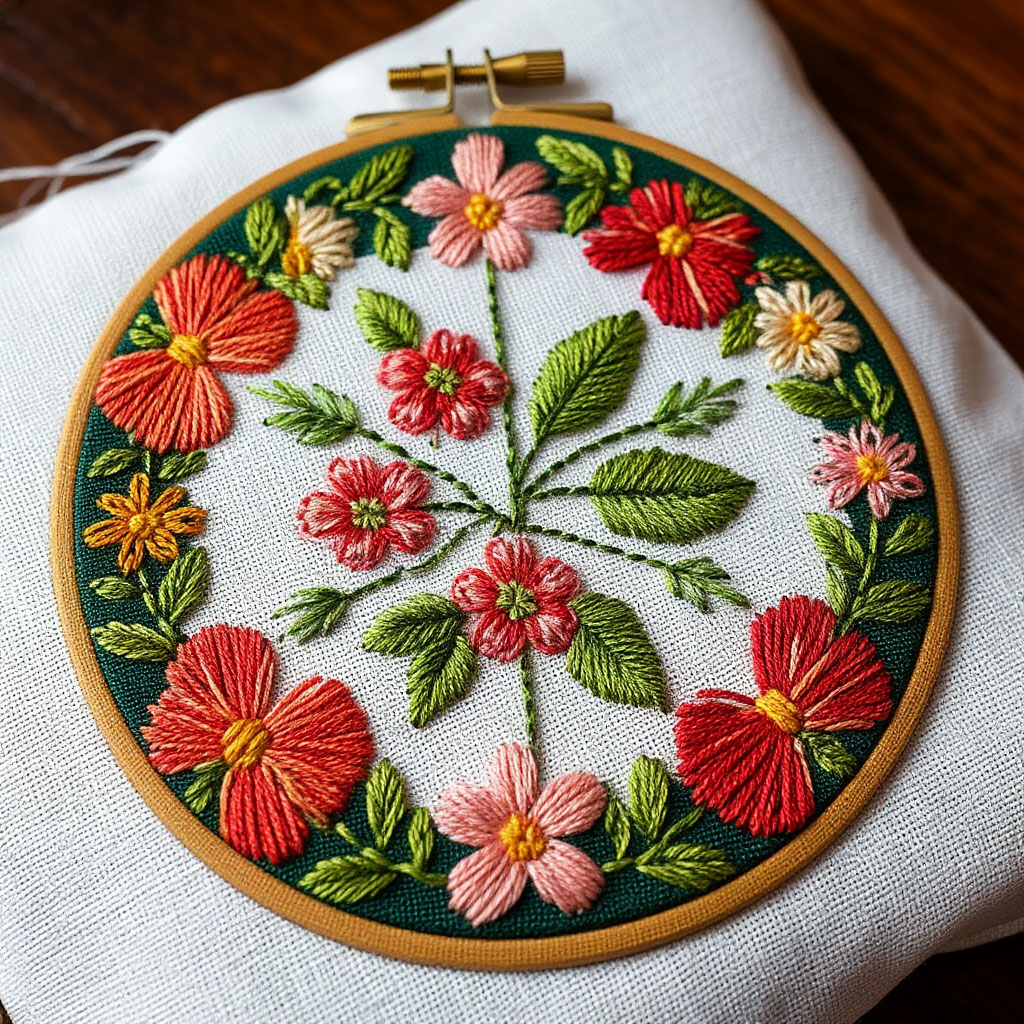
Simple Cross-Stitch Projects to Try First
Choosing that first project is crucial for anyone starting their cross stitch journey. The perfect beginner pattern makes learning enjoyable while creating something beautiful. For cross stitch for beginners, simple designs with clear instructions work best to build confidence and skills.
What Makes a Great First Project
The ideal first cross stitch project combines simplicity with visual appeal. Small designs measuring 50×50 stitches or fewer allow beginners to complete projects quickly. Patterns with just 3-5 colors help focus on mastering stitches rather than complicated color changes. Clear, bold designs without tiny details work better than intricate patterns when learning how to start cross stitching.
Top Beginner-Friendly Project Ideas
Monochrome designs offer the perfect starting point for cross stitch for beginners. Simple black-and-white silhouettes of animals, hearts, or stars teach stitch consistency without color changes. Single-color geometric patterns or initials make excellent practice pieces too.
Fruit and vegetable motifs serve as classic easy cross stitch patterns. An apple design using 2-3 shades introduces basic color blending. Cherries or lemons with their simple shapes and limited color palettes work equally well for first attempts.
For those interested in animal designs, stylized owls, hedgehogs or whales make charming first projects. These typically use 3-4 colors on the best fabric for cross stitch, usually Aida 14-count, creating satisfying results without frustration.
Seasonal motifs like snowflakes, pumpkins or Christmas trees offer timely projects for cross stitch beginners. Their familiar shapes and holiday themes make them particularly rewarding to complete. Grab these beginner-friendly cross-stitch charts—owl, hedgehog, and whale—with DMC legends and clear tips. Print at 100% for crisp grids and true sizing.
Starting Your First Project Successfully
Proper preparation makes all the difference for first-time stitchers. Begin by organizing a comfortable workspace with good lighting. Secure the best fabric for cross stitch in hoops to maintain even tension. Starting from the center of the design ensures proper placement, while completing one color at a time in small sections keeps the project manageable.
Common Pitfalls to Avoid
Many beginners quickly try to start stitching patterns that are too complicated. Others struggle with basic techniques like securing the thread correctly or keeping the stitches tight. Using too long of a thread often leads to tangling, and missing fabric markings can lead to placement errors. These difficulties highlight why it is important to start with really simple cross stitch patterns.
Celebrating Early Creations
Even the simplest finished pieces are worth showing off. Small hoops are a great solution for miniature works. Finished pieces can be transformed into functional items, such as bag accessories or decorative magnets. Some beginners incorporate their embroideries into greeting cards to give them a personal touch.
FAQ
Do I need to wash Aida cloth before cross stitch?
No. Most Aida has sizing that helps tension. If it feels stiff or irritates skin, lightly rinse and air-dry flat. Don’t prewash printed fabrics. Zigzag edges first.
How many strands of floss for 14 count cross stitch?
Use 2 strands for full crosses on 14-count. Use 1 strand for backstitch. Go 3 strands if you want denser coverage on darker Aida. Test a 1″ square first.
Will DMC floss bleed when I wash my finished cross stitch?
Usually no. Dark reds and blacks can sometimes tint fabric. Test a spare strand in warm soapy water. First wash finished pieces cold with a color catcher.
How long does a 50×50 cross stitch take a beginner?
Plan about 12–25 hours. That’s ~2,500 stitches at roughly 100–200 stitches per hour. Work in 30–45 minute sessions. Mark progress by 10×10 blocks to stay steady.
Can I iron cross stitch to remove hoop wrinkles?
Yes. Place work face down on a towel. Use low heat and light steam through a pressing cloth. Don’t press directly on stitches. Let it cool completely before framing.
A clear cross stitch for beginners tutorial that walks through supplies, Aida cloth, floss, and your first stitches—great for visual learners.
The beginner cross stitch journey should focus on enjoyment, not perfection. Starting with these accessible projects, you develop fundamental skills while creating tangible results. As confidence grows with each completed project, beginners move on to more complex designs, rejoicing in their new successes and accomplishments. You can now download a cross stitch beginners checklist — a practical companion to guide you as you pick patterns, stitch neatly, and enjoy the creative journey.
